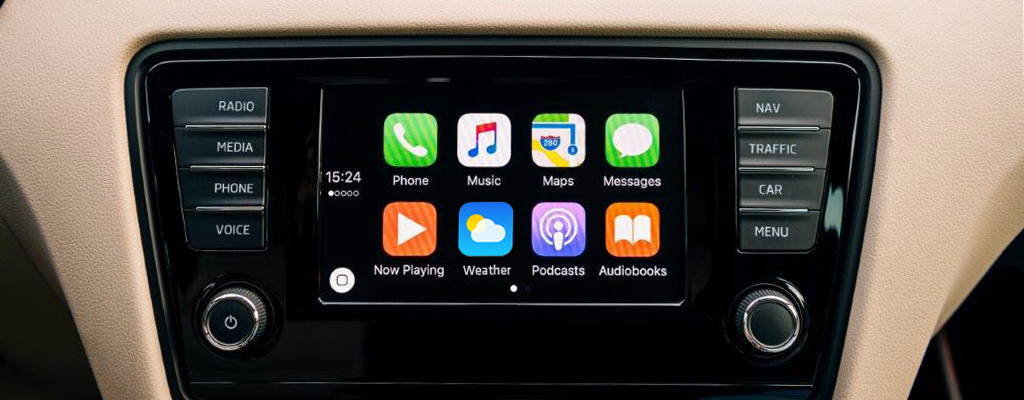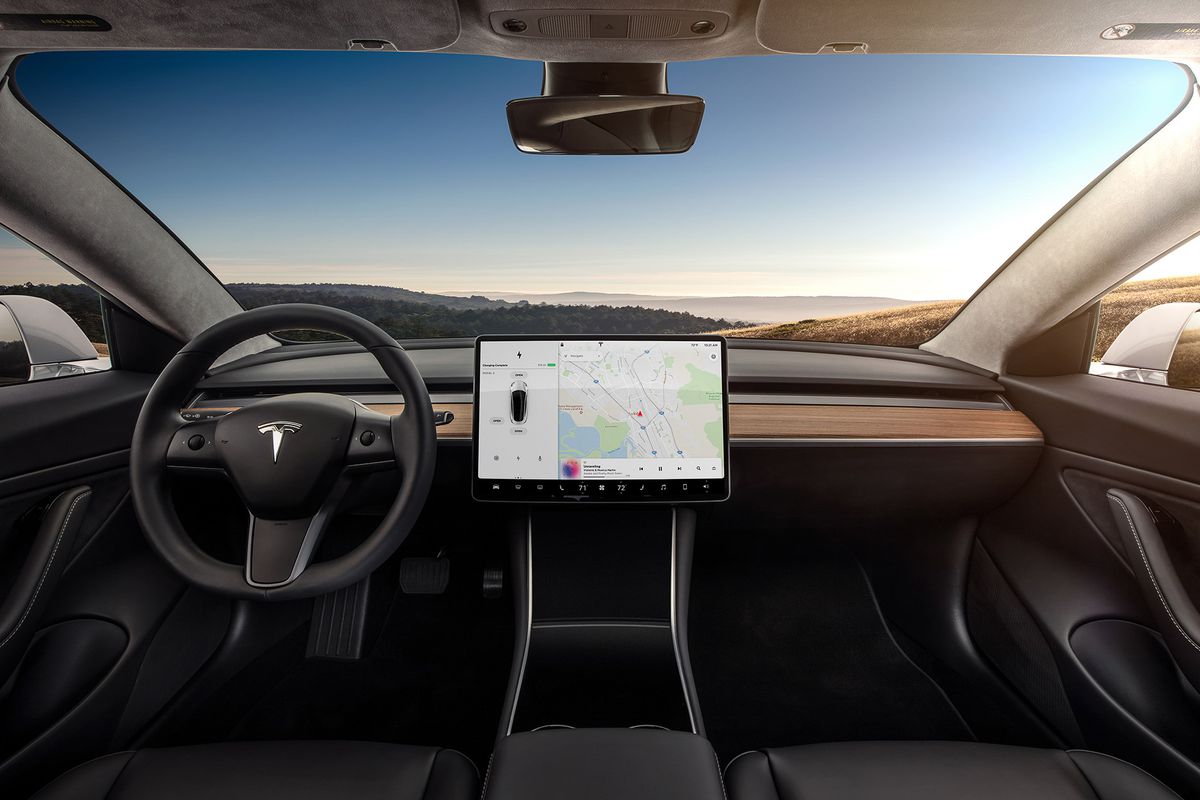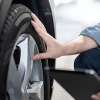
The future of touchscreens in our vehicles might seem set in stone, but are they the best replacement for physical dials and buttons or should manufacturers look elsewhere?
What do touchscreens control?
Prior to the introduction of touchscreens all the controls in a vehicle were physical: mechanical buttons and dials allowed drivers and passengers to operate features such as the radio and air conditioning. However, with the advent of new touchscreen technology, many manufacturers began to migrate more of the car’s functions to a touch-based system, with some manufacturers such as Tesla doing away with any centre console buttons altogether.
Across the industry there is a mix of what touch-based systems are capable of, in both cars and vans alike. While it’s true that many vehicles feature a combination of buttons, dials, touchscreen and other inputs such as voice control, it’s still commonplace for touchscreens to provide the main controls for features such as navigation, climate control and entertainment.

The dashboard of a Tesla Model 3. Photo: Tesla
Even the ability to adjust wing mirrors and steering wheel positions, which for a long time have been electrically aided, are now sometimes adjusted via the touchscreen without the option of any other input from the driver.
Here to stay or a passing trend?
Touchscreens in vehicles aren’t a recent innovation. The 1986 Buick Riviera featured a 9-inch touchscreen that enabled drivers to adjust their climate control, change the radio station, and check fuel levels – but it didn’t catch on. One of the reasons for this was that drivers deemed it too distracting and weren’t able to use the screen safely while driving.
Since then, touchscreens have become commonplace and far more responsive to use, perhaps taking away some of those distracting qualities. The introduction of the iPhone in 2007 exploded the demand and usage of touchscreens on personal devices, and many of us became used to operating touchscreen controls. Like the phone market, touchscreens in cars and vans have matched consumer demand and have become a mainstay of modern vehicle design. Both phone and vehicle manufacturers also benefit from the ease of installing a simple touchscreen (with accompanying software development), replacing the need to machine and install physical buttons and dials.
This year’s latest vehicles have an eclectic mix of touchscreens and buttons. New Audis have seen the addition of a further touchscreen to operate the climate control, whereas Mercedes have moved some of the controls of their infotainment screen to the steering wheel. This year’s Tesla Model 3 keeps with their infamous large touchscreen but does also use buttons on the steering wheel to operate some of the car’s functions. And it’s not just cars, with the latest Ford Transit featuring a large touchscreen and use of Apple CarPlay and Android Auto.

Mazda have said they’ll phase-out touchscreens. Photo: Mazda
However, there have been a few manufacturers who buck the touchscreen trend. Mazda have vowed to phase out touchscreens in their vehicles, with the latest models still receiving a screen but without the ability to operate it via touch. Honda also made the return to analogue for climate controls in their latest Jazz, stating that their customers found touchscreens difficult to ‘operate intuitively’ while driving. However, not all the in-car functions were changed back, with a touchscreen still at the driver’s disposal.
It’s clear from this mix across manufacturers that screens will be here to stay, especially when you consider their usage in digital dials and sat-navs. As for touchscreens, it’s worth looking at the safety implications of using these systems to determine if they will, or should, stick around.
Innovation or dangerous distraction?
It’s clear from buying behaviours that there is a demand for touchscreens in vehicles, but questions must be asked aabout their propensity to distract drivers and pull their attention away from the road. After all, IAM RoadSmart’s 2017 study, The Battle for Attention, discussed the fact that “Being distracted can make drivers less aware of other road users […] and less observant of road rules such as speed limits and junction controls”, which highlights the need to put the spotlight on in-car distractions such as touchscreens.
Research commissioned by IAM RoadSmart in 2019 found that infotainment systems increased average stopping distances to between four and five car lengths and that using touch control resulted in reaction times that were even worse than texting while driving. It was also found that when performing navigation tasks, drivers deviated in their lane position by half a metre or more. The issue was not confined to casual drivers either, with one LGV driver being quoted in the study saying “As a professional [driver] I was pretty alarmed at how distracting [Android Auto] was. It certainly felt it was a few seconds at a time, but it was probably a lot longer.”
These findings may come as no surprise to drivers who have used these systems, as interacting with touchscreens requires more hand-eye coordination than traditional analogue controls. However, manufacturers are starting to recognise the need for dials and buttons once more and are trying to combat the risk of distractions from touchscreens in numerous ways.
Familiarity. Some manufacturers are installing identical systems and layouts across their vehicle range to breed familiarity and allow drivers to use their infotainment systems without having to look away from the road. Volvo is one such manufacturer, but there are others who rely on Android Auto and Apple CarPlay to bring in interfaces that drivers will be familiar with, in the hope of it being less distracting – but as mentioned previously this is not necessarily the case.
Gesture controls. These are starting to appear in vehicles such as the BMW 7 Series, and allow drivers to operate functions without the need to reach any touchscreen or buttons altogether. They allow drivers to operate functions such a volume and music selection without the need to take their eyes off the road.
Voice control. Similarly, voice control is a great solution for tasks that require many steps like setting up navigation or finding particular music to play. The prediction is that as voice-recognition continues to improve it will take over more of the car’s controls and could even eliminate the debate around touchscreens and analogue controls in the future.

The challenge for fleets
Fleet managers may see touchscreens as a welcome feature, with many business-critical operations such as route planning being facilitated by them. While in these cases it’s never a viable solution to simply remove the technology from vehicles or ban drivers from using them, there are other options available that are worth considering.
Training that is targeted towards business drivers such as vehicle familiarisation can teach drivers the procedures to follow whenever they are required to drive an unfamiliar vehicle with new on-board features, meaning they can adapt more easily to any future technologies such as gesture and voice controls. However, fleet managers must still consider the evidence of distractions surrounding touchscreens and can make purchasing decisions that help guide the future of fleet vehicles towards safer options.
Overall it could be argued that, by giving drivers a choice when it comes to operating in-car features, they could choose whichever input style they find most comfortable and is therefore likely to be the safest. However, manufacturers cannot ignore evidence that touchscreens do cause distractions. It’s also clear from looking inside any concept car that screens themselves are not going to disappear – they reflect the demand for high definition, customisable experiences we’re used to on our phones, especially when you consider the increased functionality of digital dashboards. The solution therefore lies in ensuring that the inputs, not the screens themselves, change for the better, with minimising driver distractions being the focus.
If you’d like to find out more about distracted driving, and it’s impact on the fleet sector, download our free whitepaper Driving While Distracted: Challenges and Solutions which takes an in-depth look at whether technology is helping or hindering drivers, and offers guidance on the best solutions for fleet managers looking to mitigate the risks associated with in-car technology.



